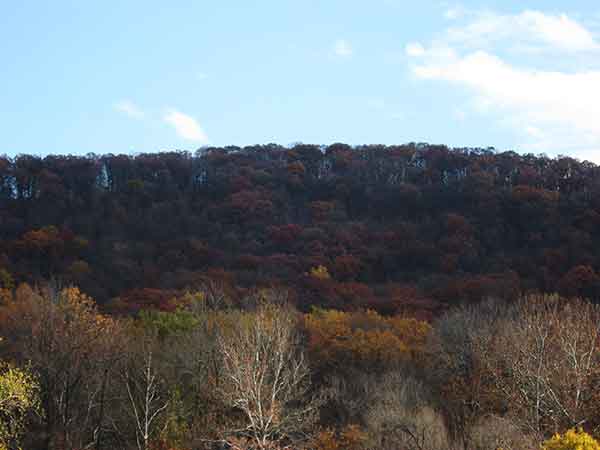
Trains were once the main way to move goods and people across the country. While we still use trains for transporting goods, train accidents are blessedly rare these days due to better equipment, engineering, and safety protocols. All of these things were missing back in the 1800s, leaving the field wide open for the worst train wrecks imaginable.
Part of the Lehigh Canal, the Slate Dam Station was demolished in the 1950s. This report of a horrible train accident is said to have happened on or near Slate Dam in 1874. I have typed in the report exactly as it was printed, which seems to have been two reports smacked together, with the newer update of the accident added to the end.

Terrible Railroad Accident.
SLATE DAM, Feb. 16.—About 1 o’clock this morning an accident occurred on the Lehigh and Susquehanna Railroad, at or near Slate Dam station, between one and two o’clock, by which one or more men have lost their lives, a large amount of property has been destroyed, and several persons have sustained serious and perhaps fatal injuries.
A freight train heavily laden, running at a high rate of speed ran into a land slide which had completely blocked the track, a large mass of rock and earth loosened by the late rains having fallen from the cut across the road.
The engine jumped the track and hangs over the bank of the river.
Eighteen cars by the force of the shock were thrown from the track and piled on each other, smashing freight of all description, which was strewn along the road and hurled into the river. Not one of the train hands as far as we could learn, escaped without some injury. The body of the Engineer, Daniel Shenton, is not yet found; is supposed by some to be in the river, and by others to be under the tender.
Oto Shannon, the fireman, is very badly scalded & burned, and a brakeman named Frank Ryan is badly scalded and bruised. To add to the horror of the scene the stove in the caboose set fire to the car and communicating with some inflammable material, among the freight it quickly spread until nine cars were in flames. The scene was awfully grand and picturesque—the cars burned six hours and the bright light reflected in the water, the deep black shadows of the mountains, the wrecked train and the gang of men seeking for the injured and endeavoring to render assistance. The nine cars and their contents are completely destroyed.
The locality of the land slide is in a deep cut where the road makes a sharp curve. Rising sixty or seventy feet almost perpendicular from the track is the face of the rocky cut, and over that a large mass of earth and gravel slid and proved a fatal obstruction to the approaching train. Even if the landslide had occurred in the day time the circumstances are such that the accident that followed it would have inevitably resulted.
The train was going north, and was the through fast freight from New York and Philadelphia. The engineer Daniel Shenton, of Ashley, certainly did not see the obstruction until he was on to it. The engine ran clean through and a hundred yards beyond it before it went down the embankment on to the towpath, carrying with it some cars.
A portion of the train ran on fifty yards further. Daniel Shenton went down with his engine, and his body was found under it afterwards burned to a crisp. The fireman, Shenton’s step-son, was thrown on to the ice in the river, and the head brakeman jumped—both getting off with slight injuries. The conductor and the rest of the train hands escaped injury.
The earth and rocks on the track were piled up to a height of about six feet, and the train ran through the pile. The wreck was most complete and disastrous, as our dispatches stated, the burning cars, the merchandise strewed round, &c., making a scene of confusion indescribable. One car was thrown into the water, and others piled over the bank or to the towpath. The unfortunate engineer’s body was scarcely recognizable, every part of him being charred to a crisp except a portion of the head. His watch was found a shapeless mass of molten metal, case and works all melted together.
Source The Carbon Advocate newspaper, February 21, 1874.

